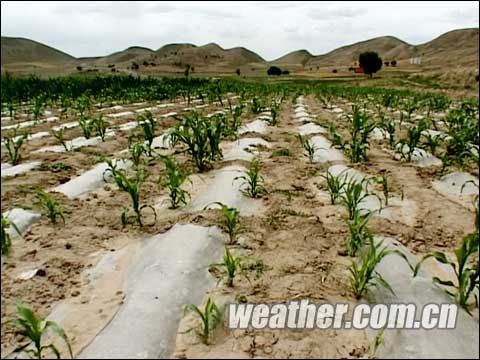Prolonged drought and a heatwave continued to plague north China Wednesday while at least 10 central and southern provinces are on flood alarm.
 |
|
A serious drought has hit northwest China's Gansu Province. It led to a shortage of drinking water for 230,000 people and affected 1.05 million hectares of farmland.
|
In Beijing temperatures have hovered around 35 degrees Celsius for nearly 10 days, and there is still no sign of a drop of temperature. The weather bureau has forecast no showers until Saturday.
Beijing has reported the hottest June in nearly four decades, with the maximum temperature reading 39.6 degrees Celsius last Wednesday. Beijing's temperature rarely topped 39 degrees in June and the previous record was in 1972, when the maximum June temperature reached 39.2 degrees Celsius.
The city also reported an all-time high of water supplies Tuesday, of 2.78 million cubic meters daily.
The heat has forced many young office workers to join online discussions on how to stay cool, which range from cold water spray to meditation daydreaming one's atop a snow mountain.
Continuous heat and drought are wreaking more havoc in the country's largest grassland of the Inner Mongolia Autonomous Region. Grain farmer Sun Yuyao in Chifeng is fighting locusts, which threaten to eat away his five-hectare cropland.
"Every step you take, you scare away about 20 locusts," said Sun. "These small, soil-colored insects are hardly detectable unless they are flying."
The local government has tried casting nets to trap and kill the locusts and burning them, and has even sent chickens to the cropland to eat them, but the number of locusts is increasing, said Sun.
By the end of June, locusts were plaguing half of Inner Mongolia, putting 3.7 million hectares of grassland and 1.45 million hectares of cropland at risk, about 20 percent of the region's arable land.
"This is because continued drought has killed some of the grass that feeds locusts," said Liu Jiaxiang, a forestry official.
In the worst areas, he said helicopters had to be used to spray pesticide. "It's certainly harmful to the environment, but we have to kill the locusts now to avoid further damage."
A drought was reported in the northwestern Gansu Province Tuesday, with 230,000 people short of water.